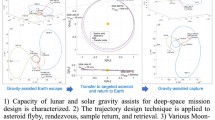Abstract
The Rosetta/Philae mission was launched in 2004 by the European Space Agency (ESA). It is scheduled to reach the comet 67P/Churyumov-Gerasimenko in November 2014 after traveling more than six billion kilometers. The Philae module will then be separated from the orbiter (Rosetta) to attempt the first ever landing on the surface of a comet. If it succeeds, it will engage a sequence of scientific exploratory experiments on the comet. In this paper, we describe a constraint programming model for scheduling the different experiments of the mission. A feasible plan must satisfy a number of constraints induced by energetic resources, precedence relations on tasks, and incompatibility between instruments. Moreover, a very important aspect is related to the transfer (to the orbiter then to the Earth) of all the data produced by the instruments. The capacity of inboard memories and the limitation of transfers within visibility windows between lander and orbiter, make the transfer policy implemented on the lander CPU prone to data loss. We introduce a global constraint to handle data transfers. The purpose of this constraint is to ensure that data-producing tasks are scheduled in such a way that no data is lost. Thanks to this constraint and to the filtering rules we propose, mission control is now able to compute feasible plans in a few seconds for scenarios where minutes were previously often required. Moreover, in many cases, data transfers are now much more accurately simulated, thus increasing the reliability of the plans.
Similar content being viewed by others
References
Aggoun, A., & Beldiceanu, N. (1993). Extending CHIP in order to solve complex scheduling and placement problems. Mathematical and Computer Modelling, 17(7), 57–73.
Philippe, B., Le Pape, C., Nuijten, W. (2001). Constraint-Based Scheduling: Springer.
Beldiceanu, N., & Carlsson, M. (2001). Sweep as a generic pruning technique applied to the non-overlapping rectangles constraint, In: Seventh International Conference on Principles and Practice of Constraint Programming (CP 2001), LNCS 2239, pp. 377–391. Springer.
Cesta, A., Cortellessa, G., Denis, M., Donati, A., Fratini, S., Oddi, A., Policella, N., Rabenau, E., Schulster, J. (2007). Mexar2: AI solves mission planner problems. IEEE Intelligent Systems, 22(4), 12–19.
Philippe, L. (2003). Algorithms for propagating resource constraints in AI planning and scheduling: existing approaches and new results. Artificial Intelligence, 143(2), 151–188.
Mancel, C., & Lopez, P. (2003). Complex optimization problems in space systems, In: 13th International Conference on Automated Planning & Scheduling (ICAPS’03), Doctoral Consortium.
Oddi, A., & Policella, N. (2007). Improving robustness of spacecraft downlink schedules. IEEE Transactions on Systems, Man, and Cybernetics, Part C, 37(5), 887–896.
Righini, G., & Tresoldi, E. (2010). A mathematical programming solution to the Mars Express memory dumping problem. IEEE Transactions on Systems, Man, and Cybernetics, Part C, 40(3), 268–277.
Author information
Authors and Affiliations
Corresponding author
Rights and permissions
About this article
Cite this article
Simonin, G., Artigues, C., Hebrard, E. et al. Scheduling scientific experiments for comet exploration. Constraints 20, 77–99 (2015). https://doi.org/10.1007/s10601-014-9169-3
Published:
Issue Date:
DOI: https://doi.org/10.1007/s10601-014-9169-3




